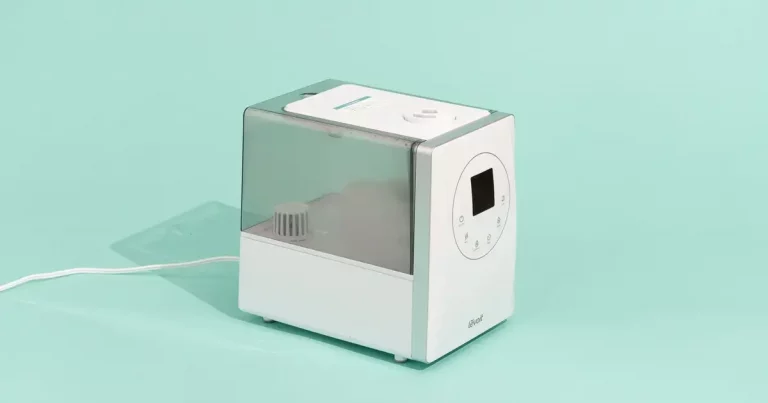Choosing the Right Xbox: Series X or Series S

If you don’t own a current-generation console and want to play new releases, it’s probably time to upgrade. Many of the biggest games are now skipping the Xbox One and PlayStation 5. Recent games like EA Sports College Football 25 and upcoming titles, including Indiana Jones and the Great Circle, Avowed, Dragon Age: The Veilguard, Assassin’s Creed Shadows, and Monster Hunter Wilds are skipping older consoles completely.
Setup
Booting up the Xbox Series X or the Xbox Series S for the first time makes it immediately apparent how much things have changed. New Xbox consoles allow you to handle most of the process via your Android phone or iPhone and the newest version of the Xbox app, and you can even restore the settings, preferences, and game files from your existing console and cloud storage. The process takes just a few minutes, start to finish.
Load times
The most immediately obvious improvements in the Series X and Series S are in speed, as they create a snappier, speedy experience from top to bottom. And these changes are evident even before you make it to the console dashboard: Both the Series X and Series S take approximately nine seconds to boot from an unpowered, unplugged state to the console home screen, and returning from standby mode is only a couple of seconds faster.
Because of those fast boot times, we recommend that you use either console’s enhanced power-saving settings, which allow the machine to draw a fraction of the power it would require on normal settings while on standby. The Xbox settings screen conveniently demonstrates the console’s changes in power usage depending on your settings.

We also recommend using the power-saving modes partly because of another Xbox Series X|S feature: Quick Resume. This feature creates saved states for the games you’re playing, allowing you to load back into supported games exactly where you last were, even if you’ve turned off (or unplugged) your console. I’ve occasionally been surprised to find games that I haven’t played in weeks or even months waiting to be quickly resumed, and I’ve been able to pop back into each game exactly where I left off. Quick Resume occasionally causes problems with online games, though.
Games and saves on an Xbox Series X or Xbox Series S are stored on internal NVMe storage, which is super fast, providing a night-and-day difference in console startup, game boot-ups, and in-game load times, if you’re coming from a previous-generation console. In addition to the impressively fast boot times, switching apps is notably fast, and they load almost instantly (depending in part on your internet connection). If you’ve been using an Xbox One for years, the difference is, to be blunt, shocking—think of it like buying your first new phone in seven years. It’s that level of improvement.
A fast, familiar user interface
Though the interface in the Xbox Series X|S is much faster, it’s very similar to that of the Xbox One. The Xbox Series X|S consoles offer full external-storage support, game-level support and customization for features like Auto HDR and FPS Boost, and robust variable refresh rate support (using low frame-rate compensation, in the best console implementation of this feature that we’ve seen). We also appreciate features likes automatic night mode, which adjusts the interface colors depending on the time of day and even reduces the brightness output of the console and its status lights, as well as little things like bonus animated dashboard backgrounds, including a special Xbox 20th-anniversary theme that’s enabled when you connect a limited-edition 20th-anniversary controller to your console.
Better graphics on old games, great graphics on new games
The Series X and Series S are both more graphically powerful than previous consoles in a variety of ways. In most titles, you can expect higher resolutions, higher frame rates, and more detailed characters and environments compared with the same games on the Xbox One or the PlayStation 4, all with better image quality. Effects should also be more pronounced and sophisticated, as the graphics hardware in these consoles can pull off greater amounts of fancy tricks such as smoke and fog with physical properties and lighting that creates shadows and reflections more like you’d find in the real world.

The Series X and Series S (and the PlayStation 5) support hardware-accelerated ray tracing, which allows for much more sophisticated visual effects and lighting. Note, however, that even though both consoles support ray tracing, those effects are absent in many games on the Series S. Forza Motorsport is a great example of both—it features ray traced reflections and shadows on the Xbox Series X, but these features aren’t available on the Xbox Series S.

The Series X and Series S also have similar, powerful CPUs—more than four times as powerful as the Xbox One and PS4. This opens the door to more sophisticated character and game behaviors, and just more stuff on screen at any given moment. The biggest improvements are most apparent in frame rates, which should hit 60 frames per second much more often than on the Xbox One or PS4, resulting in smoother-feeling and smoother-playing games. And when games can’t maintain consistent frame rates, support for variable refresh rates should help keep those games from feeling unresponsive. Examples in this regard include Dead Island 2, Diablo 4, and Elden Ring, all of which offer 60 fps modes on the Series X and Series S, something you can’t get on the Xbox One.

A number of titles originally released for the Xbox One have received frame-rate improvements on the Xbox Series X|S; Gears 5, the entirety of Halo: The Master Chief Collection, and Ori and the Will of the Wisps have all received 120 fps updates for the two new consoles. Controls also feel more responsive, in part because the Xbox team has rewritten the software behind its controllers with a feature called Dynamic Latency Input.
You can still play your old games—and they’ll look better
For players with an existing library of Xbox software, the Series X and Series S both offer nearly blanket backward compatibility, so they can run almost the entire collection of Xbox One–compatible software, which in turn includes hundreds of Xbox 360 and original-Xbox games. (The exception is Kinect software and hardware. None of that will work on either new console.) What’s more, every Xbox One–compatible piece of software runs and looks better on the Series X and the Series S than it did on previous-generation consoles. The Auto HDR feature, which uses an algorithm to tweak a game’s picture to take advantage of modern televisions’ ability to show brighter images with better contrast, helps to produce a beautiful new sense of vibrance in games like Geometry Wars: Retro Evolved 2. In a few games, this feature results in image quality that looks a little funny, but you can disable it on a per-game basis.
Microsoft also offers, for selected titles, FPS Boost, which is a proprietary software technique that allows the Xbox Series X|S consoles to effectively double the targeted frame rate of backward-compatible games without the need for official patches from the original game developer. For some games, this means they’ll run at 60 fps (or thereabouts) for the first time on consoles. For others, it means 120 fps on supported televisions. Even a number of Xbox 360 games (a console that was released in 2005 and ended support in 2014!) have received improvements, including a 4K and 60 fps update for Fallout 3.
Even when Microsoft isn’t delivering improvements at a system level, many game developers have continued to patch older titles with improvements for these new systems. And Xbox’s Smart Delivery feature seamlessly ensures that you’ll play the best version of a game available to you—which sounds obvious but unfortunately is not, as PlayStation multiplatform releases now routinely maintain separate installations of PS4 and PS5 versions.






